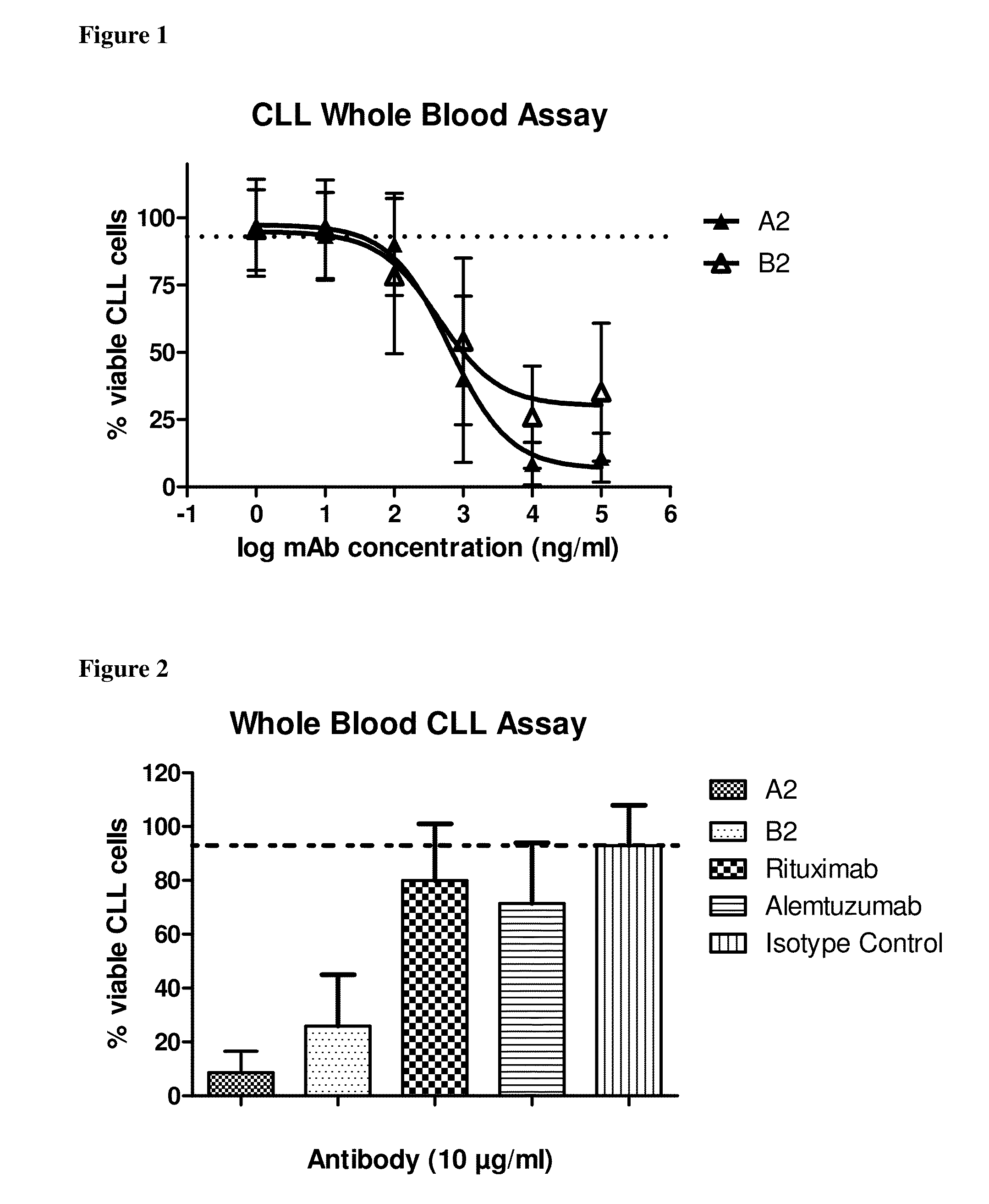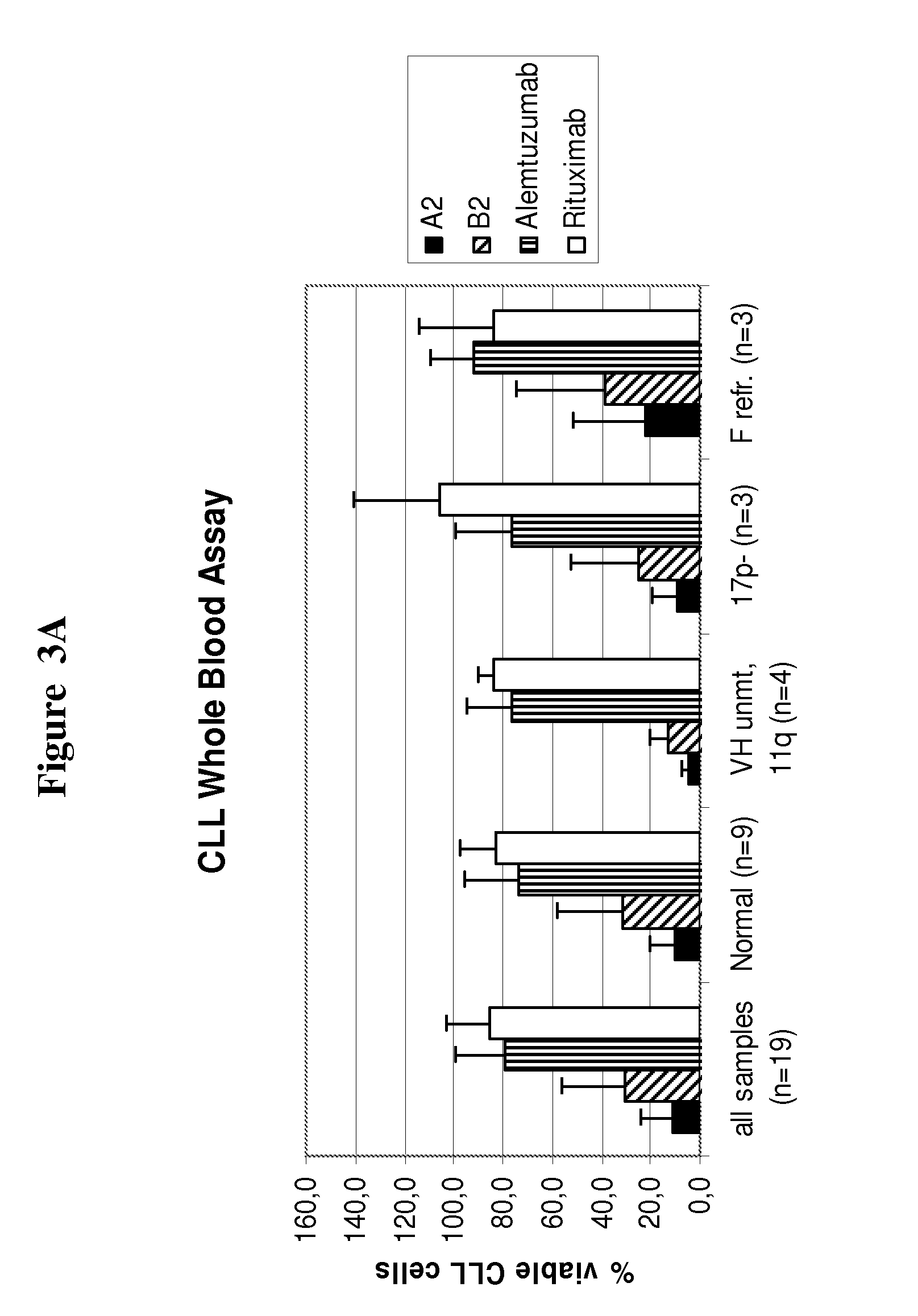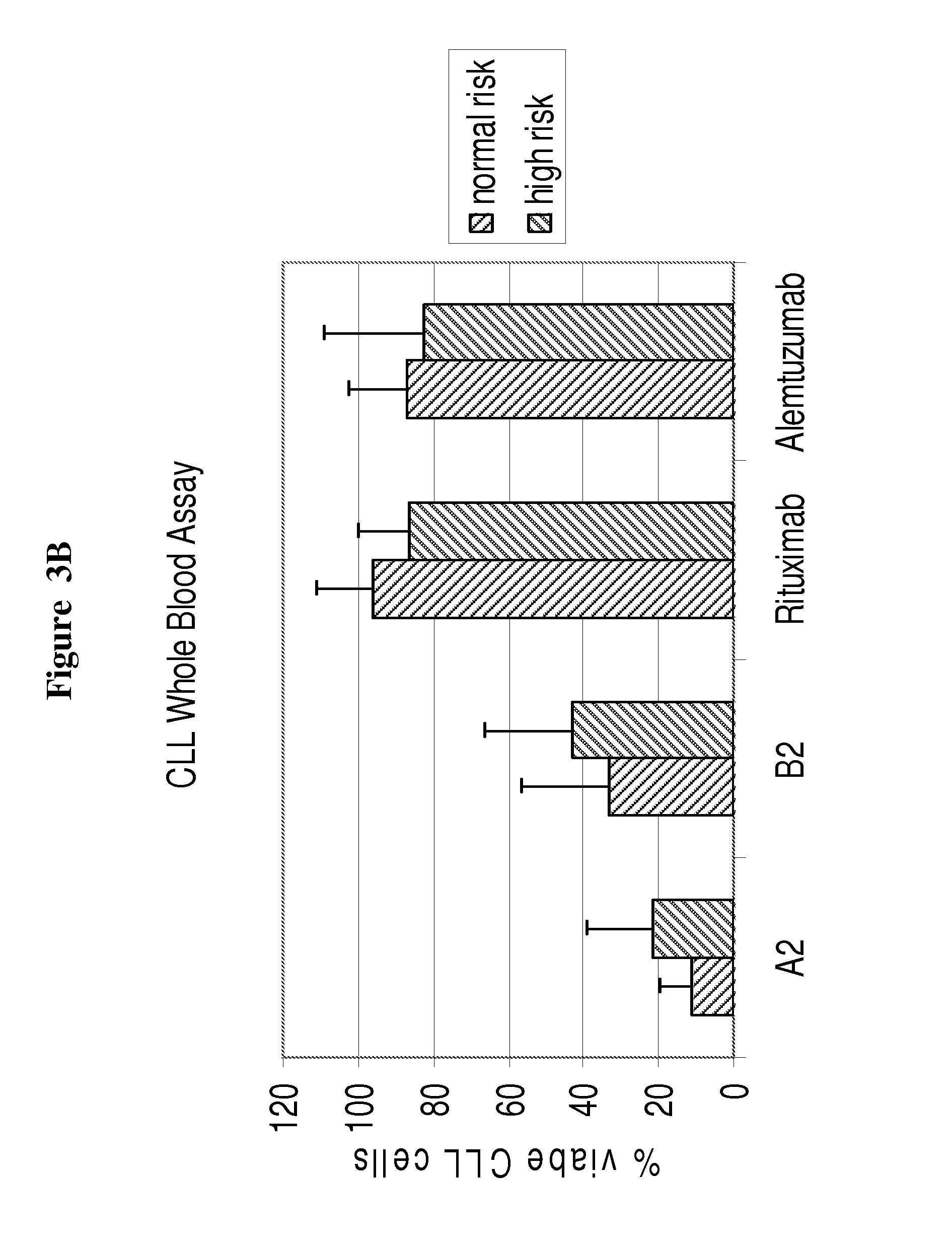Superior efficacy of cd37 antibodies in cll blood samples
a technology of cd37 and blood samples, applied in the field of immunotherapies, can solve the problems of no evidence of cll cell depletion in patient derived blood samples, and achieve the effects of superior efficacy of a2 and b2, and increased clinical benefi
- Summary
- Abstract
- Description
- Claims
- Application Information
AI Technical Summary
Benefits of technology
Problems solved by technology
Method used
Image
Examples
embodiments
[0086]The present invention concerns a CD37 antibody for the treatment of a high risk patient suffering from a B cell malignancy.
[0087]In another embodiment the present invention concerns a pharmaceutical composition comprising a CD37 antibody for the treatment of a high risk patient suffering from a B cell malignancy and a pharmaceutically acceptable excipient or carrier.
[0088]The invention further concerns the use of a CD37 antibody or a pharmaceutical composition comprising a CD37 antibody for the manufacture of a medicament for treatment of a high risk or ultra high risk patient suffering from a B cell malignancy.
[0089]The invention further concerns a method for treating a B cell malignancy comprising administrating a therapeutically effective amount of a CD37 antibody or a pharmaceutical composition comprising a CD37 antibody to a high risk patient in need thereof.
[0090]In another embodiment, the invention concerns a method for treating a B cell malignancy comprising (i) identi...
example 1
CLL Whole Blood Assay
[0118]The effect of antibody treatment on CLL cells in whole blood samples derived from CLL patients is assessed with a whole blood assay. Increasing concentrations (0.001 μg / ml to 100 μg / ml) of antibodies A2 and B2 are added to heparinised or acid-citrate-dextrose blood and incubated for 3 hours at room temperature. After antibody incubation the remaining viable CLL cells (CD19-positive) are determined by FACS analysis using a quantitative assay. As shown in FIG. 1, both A2 and B2 very potently deplete CLL cells with EC50 values of about 1000 ng / ml. The average maximum degree of CLL cell depletion at high antibody concentrations is more than 90% for A2 and about 75% for B2. These data demonstrate that antibodies A2 and B2 exert a potent and concentration dependent depletion of CLL cells from whole blood samples of CLL patients in vitro.
example 2
CLL Whole Blood Assay: Comparison to Rituximab and Alemtuzumab
[0119]In order to compare the effects of A2 and B2 to approved antibodies for CLL treatment the CD20 antibody rituximab and the CD52 antibody alemtuzumab are tested in parallel in the same patient samples. As shown in FIG. 2 CLL cell depletion at an antibody concentration of 10 μg / ml after 3 hours incubation with A2 (9% alive cells) and B2 (26% alive cells) is clearly superior to that observed with alemtuzumab (71% alive cells) and rituximab (80% alive cells). These data demonstrate that the degree of CLL cell depletion of A2 and B2 in whole blood samples from CLL patients is clearly superior to that observed with rituximab and alemtuzumab.
PUM
| Property | Measurement | Unit |
|---|---|---|
| time | aaaaa | aaaaa |
| concentrations | aaaaa | aaaaa |
| concentrations | aaaaa | aaaaa |
Abstract
Description
Claims
Application Information
 Login to View More
Login to View More - R&D
- Intellectual Property
- Life Sciences
- Materials
- Tech Scout
- Unparalleled Data Quality
- Higher Quality Content
- 60% Fewer Hallucinations
Browse by: Latest US Patents, China's latest patents, Technical Efficacy Thesaurus, Application Domain, Technology Topic, Popular Technical Reports.
© 2025 PatSnap. All rights reserved.Legal|Privacy policy|Modern Slavery Act Transparency Statement|Sitemap|About US| Contact US: help@patsnap.com



